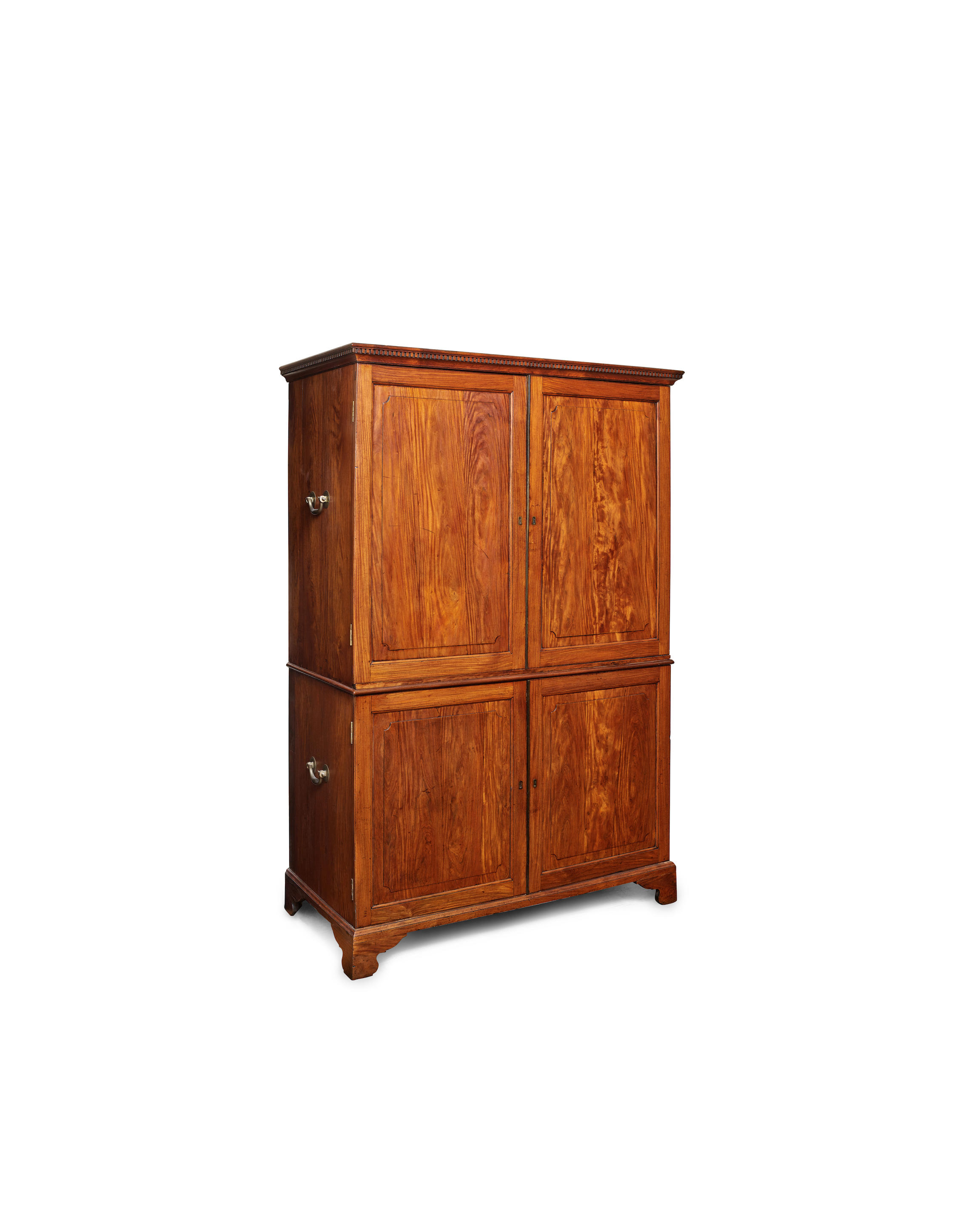A RARE HUANGHUALI TWO-TIERED STAND, XIANGJI17th century The elegant stand of 'four-corners flush', consisting of a single rectangular panelled top set within a thick rectangular frame, above plain aprons supported on thick legs of square section joined by a shelf above curving hoof feet. 80.5cm (31 1/2in) high x 41cm (16 1/8in) wide x 31.5cm (12 3/8in) deep.Footnotes十七世紀 黃花梨四面平式雙層香幾 Provenance: a British private collection 來源:英國私人收藏 Notable for its restrained design and underlying sense of linear elegance, the present stand is an unusual and remarkable example of the 'four-corners flush' design, simianping. This form, likely derived from the box-style construction of earlier periods, relied on the simplicity of its lines and figure of the wood for its beauty and was highly regarded during the Ming dynasty. The configuration of simianping corner joints greatly differs from those of waisted construction in the greater thickness of the apron. In this variation, long tenons are shaped onto the leg members penetrating through the aprons and into the stand or table top. Here the legs are set flush against the top of the stand and the austerity of the sinmianping design is subtly softened by the gently inward-curving feet and the addition of a lower shelf. Compare with a huanghuali flush-sided stool, 17th century, of similar construction to the present example, illustrated by M.Flacks, Classical Chinese Furniture, New York, 1997, pp.114-115. See also a small huanghuali waistless side table with corner legs, 17th century, which was sold at Christie's New York, 21 September 2000, lot 35.
A RARE HUANGHUALI TWO-TIERED STAND, XIANGJI17th century The elegant stand of 'four-corners flush', consisting of a single rectangular panelled top set within a thick rectangular frame, above plain aprons supported on thick legs of square section joined by a shelf above curving hoof feet. 80.5cm (31 1/2in) high x 41cm (16 1/8in) wide x 31.5cm (12 3/8in) deep.Footnotes十七世紀 黃花梨四面平式雙層香幾 Provenance: a British private collection 來源:英國私人收藏 Notable for its restrained design and underlying sense of linear elegance, the present stand is an unusual and remarkable example of the 'four-corners flush' design, simianping. This form, likely derived from the box-style construction of earlier periods, relied on the simplicity of its lines and figure of the wood for its beauty and was highly regarded during the Ming dynasty. The configuration of simianping corner joints greatly differs from those of waisted construction in the greater thickness of the apron. In this variation, long tenons are shaped onto the leg members penetrating through the aprons and into the stand or table top. Here the legs are set flush against the top of the stand and the austerity of the sinmianping design is subtly softened by the gently inward-curving feet and the addition of a lower shelf. Compare with a huanghuali flush-sided stool, 17th century, of similar construction to the present example, illustrated by M.Flacks, Classical Chinese Furniture, New York, 1997, pp.114-115. See also a small huanghuali waistless side table with corner legs, 17th century, which was sold at Christie's New York, 21 September 2000, lot 35.




.jpg?w=400?width=1600&quality=70)
.jpg?w=400)
.jpg)
.jpg)
.jpg)
.jpg)
.jpg)


.jpg)
.jpg)
Testen Sie LotSearch und seine Premium-Features 7 Tage - ohne Kosten!
Lassen Sie sich automatisch über neue Objekte in kommenden Auktionen benachrichtigen.
Suchauftrag anlegen